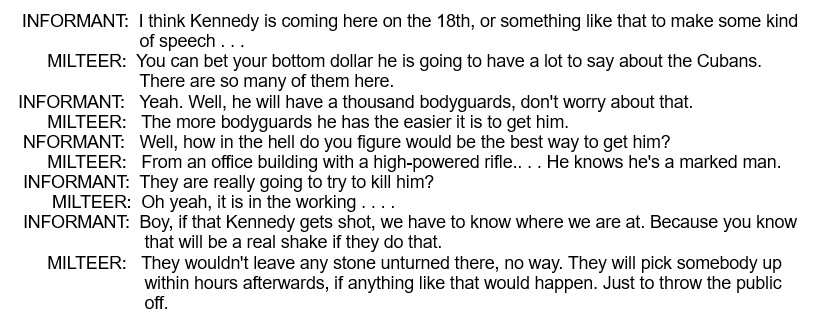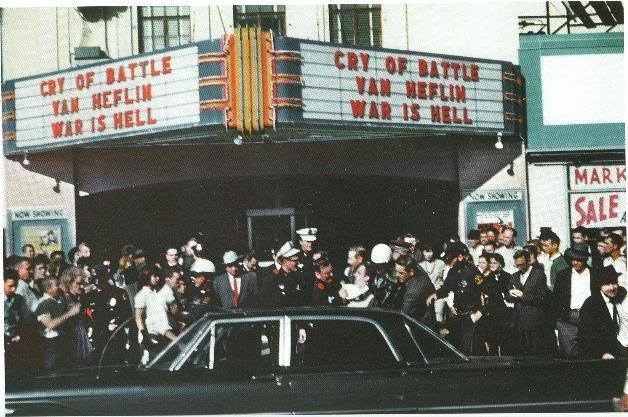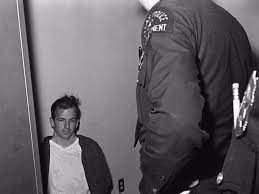Part 3: The Manipulation of Oswald
During his short adult life, Lee Oswald was a man who was always following orders.
On his 17th birthday, when Oswald enlisted in the U.S. Marine Corps, the young Texan signed himself up for a lifetime of taking orders. Through Marine boot camp and while in training in Biloxi as a radar operator, Oswald took orders. This continued through his stint as a radar operator at the Atsugi, Japan air base, from which the CIA flew its U2 spy planes. While in Japan, Oswald also helped to infiltrate the Japanese Communist Party. He was treated for gonorrhea contracted, according to records, “in the line of duty” as a result.
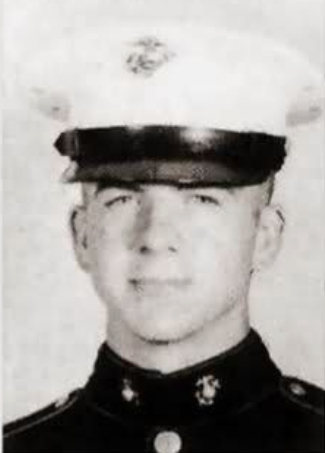
In Minsk, Oswald met a young woman, married, had a child, and eventually applied to return to the United States. The U.S. State Department granted Oswald a loan so he could be repatriated and return to the Dallas-Fort Worth area with his new Russian bride and their child. Oswald would quickly repay this loan although he officially only ever worked at low-paying jobs, and never for very long. Was Oswald receiving cash from an off-the-books employer?
During the first half of 1963, Oswald likely received new instructions to return to New Orleans, his original hometown and birthplace. There, Oswald took a cover job as an oiler greasing coffee machines. Most of the ex-Marine’s time in the Big Easy, however, was spent working under the auspices of ex-Chicago FBI agent and former Assistant Superintendent of the NOPD, Guy Banister. Oswald also collaborated with Banister’s associate David Ferrie, an ex-commercial airlines pilot and Oswald’s former commander in the Civil Air Patrol. While Banister and Ferrie were apparently running a training camp at Lake Pontchartrain for anti-Castro Cuban guerillas, Banister set up Oswald as the secretary and only member of the New Orleans chapter of the Fair Play for Cuba Committee. As an “agent provocateur” assigned to ferret out Castro sympathizers, Oswald handed out Fair Play for Cuba Committee flyers on the streets of downtown New Orleans.
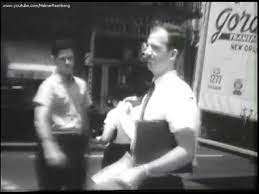
A few days later, Oswald was asked to debate Cuban exile Carlos Bringuier, who had knocked Oswald’s leaflets to the ground during their filmed confrontation; along with Ed Butler, executive director of the anti-Castro group Information Council of the Americas (INCA). The debate took place on the WDSU radio show Latin Listening Post. During the discussion, Butler asked Oswald to admit it was true he had defected to the Soviet Union and denounced his U.S. citizenship. Oswald disagreed, explaining he was simply a foreigner who for a time was granted the okay to live and work in the Soviet Union — an unlikely occurrence during the Cold War.
“I was at all times considered an American citizen, and at all times I was in contact with the American embassy,” Oswald explained. “The very fact that I am back in the United States shows that I did not renounce my citizenship. A person who renounces his citizenship becomes legally disqualified from returning to the United States.”
The repatriation loan from the State Department backs up Oswald’s claim.
As the summer of 1963 ended, Oswald was instructed to return to the Dallas-Fort Worth area and take another “killing time’ job — this time as an order filler at the Texas School Book Depository adjacent to Dealey Plaza. He also rented a cheap room at an Oak Cliff boarding house while his expectant wife Marina, and daughter, June, stayed with Ruth and Michael Paine in Fort Worth. Lee took the room, a short bus ride from work, under the assumed name O.H. Lee.
Oswald had been willing to spy on and infiltrate Japanese Communists, Soviet Communists, American Communists, and pro-Castro types. He was probably not averse to ongoing plans for the assassination of Fidel Castro.
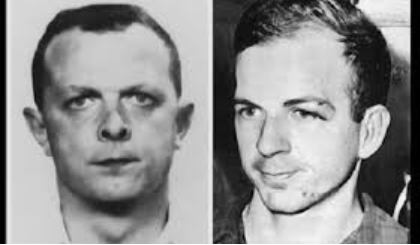
However, three days before the President’s planned landing, the Washington, D.C. FBI received a note warning that an assassination team was arriving to shoot the President on his way to the game. The threat became even more real when a landlady reported to authorities that she had seen automatic rifles lying on the beds of a room rented by four men from out of town (supposedly Cubans) — as well as a map of the President’s route from the airport.
Upon being alerted by the FBI, Secret Service personnel on duty in Chicago went into action and tracked down two of the men — who were subsequently interrogated concerning their activities. The detainees protested their innocence, and agents couldn’t connect them to any developing plot. They were released.
Then, to make an already bad situation worse, authorities received word of a credible threat against the President made by a man at a Chicago area diner. The person making that threat was Thomas Arthur Vallee, an ex-Marine and member of the John Birch Society, Vallee boasted he had the weapons and ammo to do the job.
The ex-Marine was put under surveillance, then arrested the morning of JFK’s scheduled visit, which was cancelled. Inside Vallee’s car authorities found a small arsenal of weapons and hundreds of rounds of ammunition. Valle, it was discovered, worked in an office building that overlooked Kennedy’s planned route.
The similarities between Oswald and Vallee were startling…too close to have been mere coincidence. Vallee would perhaps have made an even more convincing patsy, something akin to a Lee Oswald on steroids. Vallee was more outspoken, more violent, more erratic, and boasted a vastly superior arsenal of weaponry.
Oswald and Vallee shared a lengthy list of items in common, including these:
- were ex-Marines
- had been assigned to U-2 spy plane bases in Japan
- pledged themselves to extremist, radical causes
- suffered from a history of emotional meltdowns
- worked in buildings that overlooked the Presidential motorcade routes
- associated with far-right, anti-Castro Cuban exiles
- helped train anti-Castro Cubans for an armed invasion of their homeland
- were openly critical of how the United States treated its citizens
- were suspected of having ties to U.S. intelligence agencies.
Even more startling, author Edwin Black who first exposed the Chicago Plot, would later reveal a show-stopping piece of intelligence. According to Black’s sources, the original tip forwarded to the FBI about the Chicago Plot had come from a man known only as Lee. Could that have been Lee Harvey Oswald, recently hired order-filler at the Texas School Book Depository? Or perhaps Mr. O.H. Lee, a boarder at Gladys Johnson’s Oak Cliff boarding house on North Beckley.
Several days after Vallee’s arrest, a police informant sat in a Miami hotel room, wearing a wire to secretly record the following conversation with a wealthy political extremist named Joseph Milteer:
From an office building with a high-powered rifle. They will pick up somebody within hours afterwards…Just to throw the public off.
Sometime just after noon on Friday, November 23rd, Lee Oswald sat in the second-floor lunchroom of the TSBD. Perhaps thinking he had helped save the president in Chicago. Within a few minutes, Lee could hear the noise from the crowds grow louder as the motorcade approached and turned onto Elm Street. A few moments later the fatal shots rang out, then all hell broke loose. According to the official story, a figure appeared in the doorway and barged in to the second floor lunchroom. A motorcycle cop pointed his gun at Lee’s belly and ordered him to come forward. But Mr. Truly came in right after and told the cop, “No, he’s okay. He works here.” The men continued on their way, racing up the stairs. Oswald got his jacket, walked out the front of the TSBD through the glass doors, and headed east on foot
Again, according to the official story, Oswald hopped on the first Oak Cliff bus he could hail…it was for the Marsalis Avenue route. However, as bus 1213 crept back towards Dealey Plaza, traffic became horribly snarled. Another passenger, frustrated at the lack of forward progress, stepped forward to ask the driver for a transfer. Oswald also got up and asked for a transfer, then departed the bus. The Warren Report tells us he walked south for a few blocks to the taxi stand near the Greyhound bus terminal. Lee directed the cab driver to take him to North Beckley in Oak Cliff, the street on which his rooming house was located.
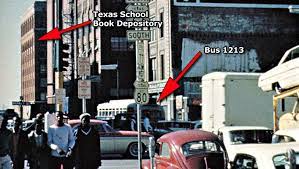
What Harry Olsen would not admit is exactly what he was doing during the time JFK and Tippit were shot. Olsen claimed he was off duty, nursing a broken leg that sported a cast, and earning some extra cash by doing a favor for the lawyer friend of another cop. Olsen said he was alone most of November 22nd guarding an “estate” that belonged to a deceased client of the lawyer. The property was located somewhere on 8th Avenue in Oak Cliff, just a couple blocks north of 10th Street where Tippit was gunned down. When pressed, Olsen could not remember the name of the cop who gave him the referral, could not remember the lawyer’s name, could not remember the dead property owner’s name, and could not remember the address of the property. He did remember someone phoned the dead owner to tell her JFK was just shot. Upon learning this news, Olsen said he walked a few blocks away to the apartment of his stripper girlfriend to watch the television coverage. We can venture a guess that Olsen also forgot his leg was supposed to be in a cast. Some weeks after the assassination, Chief Jesse Curry called Olsen into his office to inform the veteran cop he was being fired. When questioned later, Olsen couldn’t remember the reason why. Olsen’s testimony before the Warren Commission was frankly unbelievable and, at times, farcical. It was so suspicious it has led many JFK researchers to believe Olsen was either the cop who Lee’s housekeeper said tooted his horn outside Oswald’s rooming house, or one of the cops in the mystery car seen in the alleyway behind 10th Street when Tippit was murdered.
Olsen would eventually marry the stripper, move to California, and drop out of sight. But before he did, Olsen was interviewed by Dallas researcher Michael Brownlow. Brownlow asked Olsen many questions, most of which he deftly avoided answering. But at one point, Olsen shook his head and said, “Listen, Big Mike. You need to understand something. A lot of people were following orders that day. Oswald was following orders…”
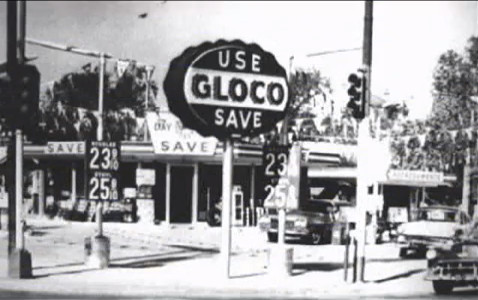
Tippit was likely waiting for a city bus to come off the viaduct. He would follow that bus until an individual named Lee Oswald could get off alone at one of the early stops. Was Tippit’s assignment to pick up Oswald and drop him off at the Texas Theater? Tippit had met Oswald previously at Austin’s Barbeque joint down in his regular patrol area.
The patrolman could see no busses coming. Gloco employees watched as Tippit’s car suddenly pulled out and headed south on Lancaster Avenue at a high rate of speed. At 12:54 p.m. the dispatcher again calls Tippit, who now reports his position — correctly — as Lancaster and Eighth. Despite being thrown a curve ball, Tippit cruises the neighborhood for several minutes, he parks his patrol car facing north next to the Top 10 Records store — barely a block from the theater. Tippit hurries inside and asks to use the store phone. Store employees see Tippit dial a number, listen, but he never speaks. After what must have been six or seven rings, Tippit hangs up and quickly goes back outside to his patrol car.
Meanwhile, Oswald has paid his entrance fee and is seen by manager Butch Burroughs, who later recalled how Oswald slipped in between “1:00 and 1:07.” Patron Jack Davis watches curiously as Oswald keeps changing seats, sitting next to one person after the other in the mostly empty movie house. Davis corroborated Burroughs’ timeline as to when Oswald was in the theater. Davis described how Oswald had sat next to him, did not say a word, then got up after a few minutes to sit elsewhere. Oswald reportedly even sat next to an obviously pregnant woman — who soon got up, left, and never returned. In retrospect, Davis thought Oswald had been looking for someone — someone he didn’t personally know.
After several futile minutes of searching, Oswald went to the lobby and purchased popcorn from Butch Burroughs — approaching the time when Officer Tippit would be killed blocks away.
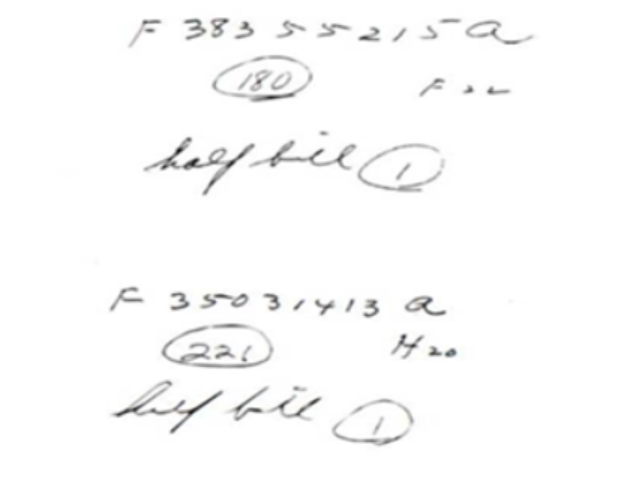
Over next to the Top 10 Records store, Officer Tippit sat in his patrol car listening to police radio traffic regarding the flurry of activity at Dealey Plaza and the Texas School Book Depository.
Suddenly, Tippit’s dispatcher was hailing him. There were reports of a fight at 10th & Marsalis. One participant was said to have been stabbed and subsequently thrown into the back seat of a blue sedan, possibly a Mercury Monterey, which then immediately left the scene.
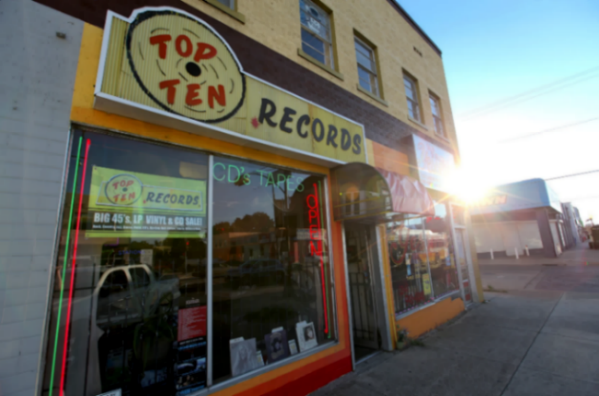
Tippit acknowledged he was responding, put the 1963 Ford Galaxie in gear, pulled out, checked traffic as he eased into the intersection at Jefferson, and stepped on the gas. Employees at Top Ten recall Tippit peeling out and rocketing across Jefferson, headed north towards Sunset and next 10th Street.
The father of three was thinking how he had no partner that day, and not much in the way of back up except William Mentzel who was distracted by an accident. As J.D. blew through Sunset and arrived at W. 10th, he slowed to turn right heading east towards Marsalis. Tippit observed a car headed west towards him on 10th — and away from the scene of the disturbance. It matched, in general, the description of the car said to have left the fight with a stabbing victim in the back seat.
As the suspect car passed S. Bishop, Tippit turned left and fell in behind the target vehicle. Without turning on his flashing lights and using standard police procedure, Tippit sped up, passed the sedan, then forced the car to the curb.
Tippit jumped out, signaled the driver to stay put, and rushed to look into the auto’s back seat. Nothing, nobody there. He had just wasted precious moments stopping the wrong car. Without saying a word to the startled man behind the wheel, Tippit raced back to his patrol car, reversed course, and sped off to the east. The motorist, an insurance man named Andrews, would later describe how the patrolman--badge name TIPPIT--looked upset and was acting wild.
Just after this incident the encounnter with whoever killed Tippit took place. J.D. eased over towards the sidewalk, followeing a man on foot, then tooted his horn. The pedestrian turned, acted surprised, and Tippit beckoned him over to the car. The man approached, bent over, and looked through the front passenger window. Only the car’s little vent window was open.
Tippit opened his car door, slowly climbed out, and adjusted his cap. Tippit reached back and put his right hand on the butt of his service revolver, Western-style. As he slowly made his way to the front of DPD car #10, the young man paralleled him on the passenger-side of the vehicle, easing forward.
Suddenly, out of the corner of his eye, Tippit caught the man’s sudden movement, reaching under his jacket to draw a gun. Tippit stepped back and began to turn awkwardly to his right, his own revolver clearing the holster. But with his right hand facing the gunman Tippit was like a left-handed ballplayer at shortstop. The gunman had the drop on Tippit as well as the better angle and position. The last thing J.D. saw were the muzzle flashes as his world faded into nothingness.
As the gunman looked down the barrel of his .38, the patrolman dropped out of sight behind the front driver’s side fender. He jump-stepped back to the sidewalk, adrenalin pumping, and began to hustle away from the dead patrolman’s car.
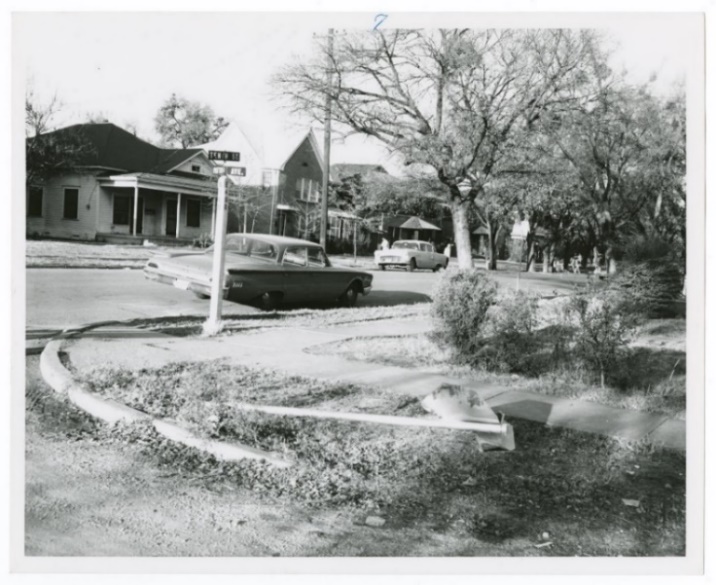
The killer glanced at a woman standing catty corner across the intersection. Looking around, he saw no one else coming — yet. “Poor dumb cop,” the shooter muttered out loud. He jumped the hedges and kept on going, never noticing the crouching cab driver or even his cab.
After purposefully disposing of the shells--and because of the pattern in which they were found, it is highly unlikely they were ejected at the same time. It is much more likely they were thrown down by the killer. The gunman now automatically cut diagonally across Patton from the east sidewalk to the west sidewalk, picking up his pace as he headed south towards Jefferson. He snapped shut the revolver’s cylinder and pointed the gun upwards but at the ready — in a raised pistol position. A stocky white man in a white shirt and tie, Ted Callaway, had come out from the car lot’s office and was just reaching the eastern sidewalk. “Hey, man!” the witness yelled. “What the hell’s goin’ on?” The killer did reply to this, but no one knows what he actually said.
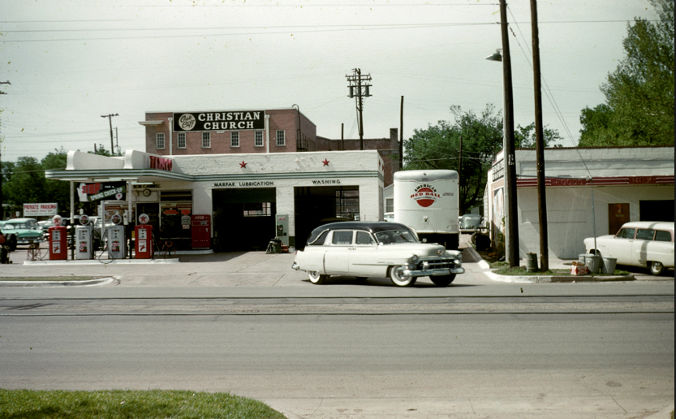
An 8” x 10” crime scene photograph depicting J.D. Tippit’s patrol car was later autographed for the FBI historian Farris Rookstool. It was signed by Jim Leavelle, Bob Barrett, T.F. Bowley, Roy Nichols, and Kenneth H. Croy – who reportedly wrote: “First on the scene, recovered Oswald’s wallet there too.”
Witness Domingo Benavides has secured an empty Winston cigarette pack in which he placed the first two shells discarded by the killer. Barbara and Virginia Davis recovered the last two shells along the Patton Avenue side of their rented apartments later in the afternoon.
At 1:40 p.m. Captain Westbrook arrived, but first went immediately to the area behind Ballew’s Texaco where the gunman had last been spotted. Westbrook will involve himself in the discovery of the discarded Eisenhower jacket, then continue to the Tippit murder scene where Officer Croy will hand him “Oswald’s” wallet. Westbrook will show the wallet and its contents to FBI Agent Bob Barrett and several other law enforcement officials — all while being filmed for posterity. But before the end of November 22nd, the alleged 10th St. “Oswald” wallet will disappear for all eternity.
Wallet, shells, jacket…all evidence pointing to a single person who must have represented one of the most incompetent criminals in the history of American law enforcement, Lee Harvey Oswald. Oswald will soon be arrested with the alleged murder weapon in his possession in a darkened neighborhood theater. All so very convenient and incriminating.
As the minutes pass, more and more police units flood the central Oak Cliff area as news of a cop killing is broadcast. They arrive in force, racing up and down Jefferson Boulevard like a swarm of angry hornets darting around looking for someone or something to sting. They are about to be pointed directly at a likely suspect sitting in the Texas Theater with a loaded .38 concealed under his raggedy long-sleeved brown shirt.
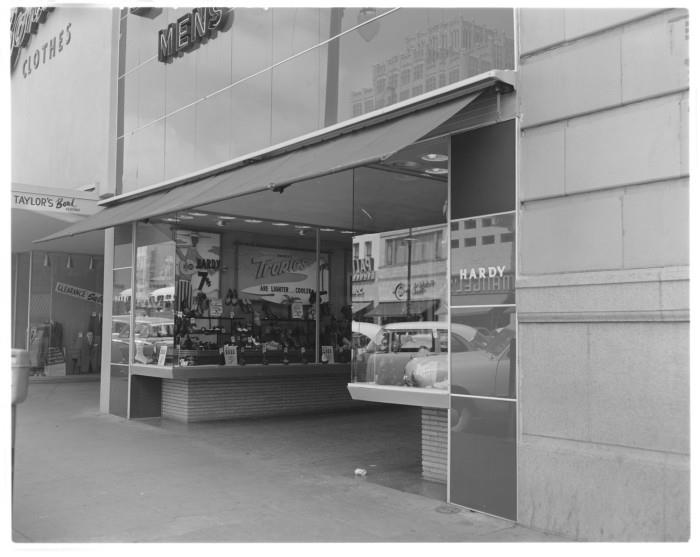
“That guy’s up to something,” Brewer remarked. “It might have to do with all these police cars racing around.”
“Why don’t you go follow him,” the clerk suggested. “I’ll cover the store.”
Johnny Brewer opened the door and walked through the store lobby and out onto the sidewalk. He watched as the man hesitated in front of the theater, then hurried in. Brewer walked down to the enclosed ticket booth. A concerned Julia Postal was on duty listening to her radio for more news about the assassination.
“Excuse me, but did you just sell some guy a ticket?”
“No, not since about the time the movie started.”
“So, you didn’t just see anybody go in with or without paying for a ticket?”
“No.”
“I think you should call the police.”
Ms. Postal hesitates. She doesn’t want to cause a fuss over somebody sneaking into the movie for free. The police already have enough excitement going on this afternoon anyway. Butch the manager will see the guy, ask for his ticket, and send him back out if he doesn’t have one.
Brewer insists, and after a few more moments of discussion, Ms. Postal acquiesces and makes the call to Dallas Police. Meanwhile, down at the Hardy Shoe Store, clerk Tommy Rowe, a good pal of nightclub owner Jack Ruby, is also putting through a call concerning a suspicious man seen entering the Texas Theater. Several additional mysterious calls will also be received by Dallas Police during this timeframe alerting them to a suspicious individual entering the theater.
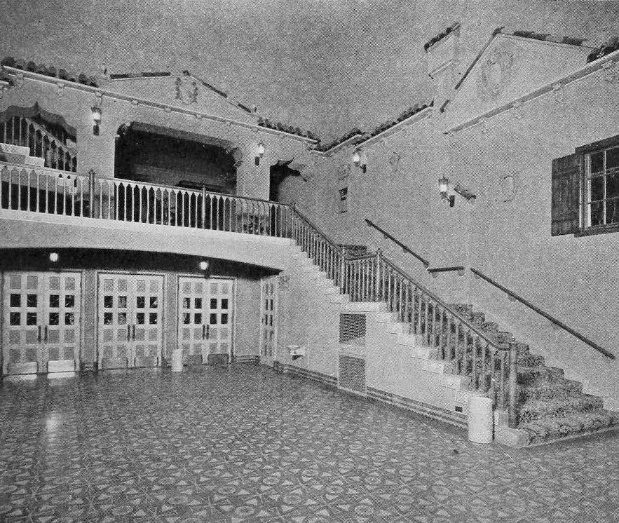
Based on reports of a suspicious man observed at the Texas Theater, DPD will send at least 15 officers along with several vehicles to the scene. Capt. Westbrook was one of the first to arrive. “Pinky” Westbrook parked his blue unmarked police car directly out front — strange considering Westbrook told the Warren Commission someone had given him a ride out to Oak Cliff. Police will surround all theater exits while the lights are turned on and Johnny Brewer is reportedly escorted onstage by two policemen. Brewer pointed the cops to a man in the back of the theater he said was the individual he had just witnessed sneaking in without paying. Police begin to systematically work their way from front to back, asking each patron to stand up and provide ID. They are perhaps hoping the suspect might attempt to make a foolish dash for an exit. He didn’t, instead sitting coolly and calmly as the cops moved in.
Years later, Tommy Rowe would tell family and friends that it was he who had pointed out Oswald to the officers, not Brewer. Tommy would also be the friend who moved into Jack Ruby’s apartment on Ewing after he was arrested for murdering Lee Oswald.
When the officers get to Oswald’s row of seats, they ask the young man to stand up and show some ID. He appeared to be complying, stood up, but then yelled, “This is it!” and threw a punch at Office Nick MacDonald. MacDonald and Oswald scuffled as nearby cops jumped in. Oswald had allegedly made a move for the .38 Special S&W revolver tucked in his waistband. The cops pounded Oswald for a bit before subduing him, resulting in his infamous and much photographed swollen left eye.
“I am not resisting arrest!” Oswald shouts as he suddenly wises up and realizes the immediate danger he might be in. “I protest this police brutality!” the suspect yells to any witnesses who might be standing nearby and watching the drama unfold.
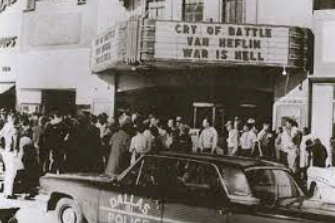
Meanwhile, a far-less viewed minor drama was playing itself out upstairs in the balcony of the Texas Theater. A second young man was in the process of being arrested and brought downstairs — but this individual would be led instead out the rear exit and into the alley where additional police vehicles sat at the waiting.
A very confused theater manager, Butch Burroughs, watched as officers now roughly escorted a second young man from the premises. That young white man, according to Burroughs, “looked almost like Oswald, like he was his brother or something.”
Hobby store owner Bernard Haire operated Bernie’s Hobby House two doors east of the theater. When he heard the growing commotion out front, Haire went to investigate. However, Haire couldn’t see over the dense and unruly crowd, so he walked back through his store and peered into the back alley. Sure enough, the alleyway was filled with cop cars, but not much was happening there. Just when Haire was ready to return inside, one of the theater’s big rear-exit metal doors slammed open and out came some officers guiding a young white man into the back of a squad car. Haire described the man as being flushed, as if he’d just been in an altercation. The police car left, suspect securely inside. For decades, Mr. Haire believed he had witnessed the arrest of Lee Oswald.
In 1987, when Haire accidentally learned the truth that Oswald had been taken out the front doors of the Texas Theater at the time of his arrest — photos convinced him it was true — the hobby store proprietor next asked the $64,000,000 question.
“Well, if I didn’t see Oswald, then just who did I see?”
We have no answer for Mr. Haire, except to mention one curious fact. No second Texas Theater arrest was ever documented. The official police report, however, describes the suspect being arrested in the balcony, while all witnesses clearly agree he was arrested downstairs in the main seating area and brought out front to Cpt. Westbrook’s waiting car.
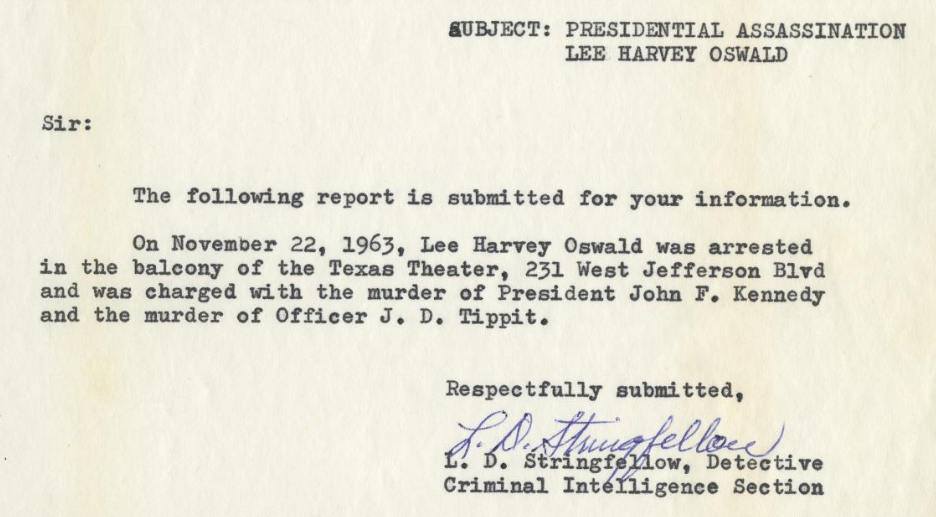
Given the benefit of decades of hindsight, some Hoover critics might opine that the former FBI director had given a more accurate description of himself rather than the suspect in custody. Allowing for the fact that Hoover had in 1960 written a memo warning his agents that someone might be using the so-called Soviet defector’s identity back in the United States, how could Hoover have been so sure of Oswald’s guilt so quickly?
When Oswald was killed less than 48 hours after his arrest, having never left Dallas Police Headquarters alive, Hoover dictated a memo that Sunday afternoon that read, “The thing I am so concerned about, and so is Mr. Katzenbach [Deputy Attorney General under RFK] is having something issued so we can convince the public that Oswald is the real assassin.”
Nicholas Katzenbach wrote the following day, November 25 — as the President, Tippit, and Oswald were all being laid to rest — that “the public must be satisfied that Oswald was the assassin; that he did not have confederates who are still at large; and that evidence was such that he would have been convicted at trial.”
President Johnson, now ensconced in the White House as the new Commander-in-Chief, was more than happy to see this “something” issued, and quickly. Thus, was born the Warren Commission and its resulting Warren Report, with its pre-determined outcome already decided before Day One of the proceedings. This is the sort of whitewash that would inevitably cook up such inconceivable nonsense such as the “magic” or single-bullet theory.
The Warren Commission was never intended to be an investigation. Rather, it was a publicity stunt concocted to sell a bill of deceptive goods to a highly traumatized American public. The ruse succeeded, at least for a while. As they might say, it was good enough for government work.


